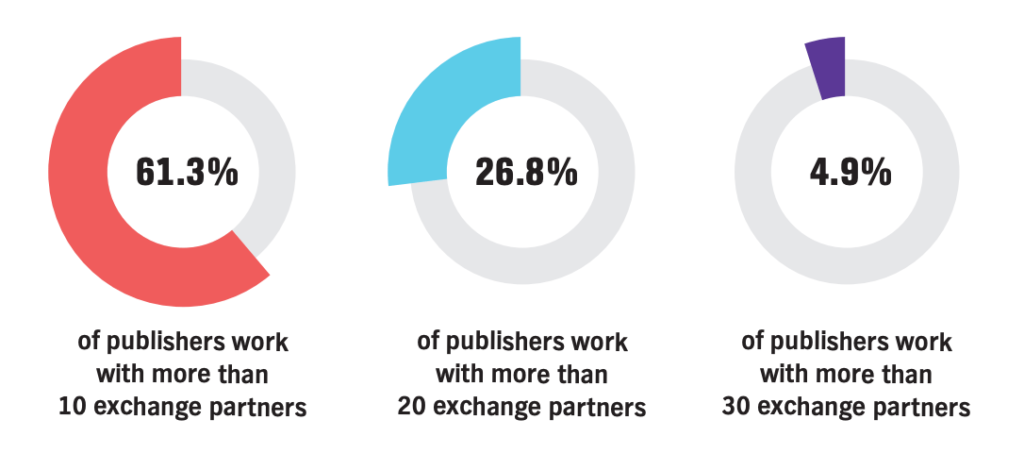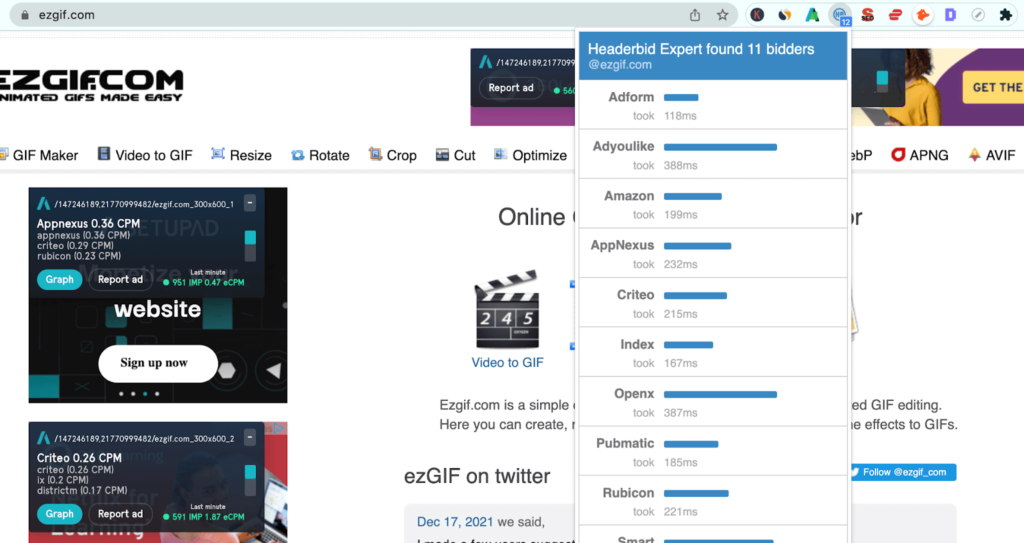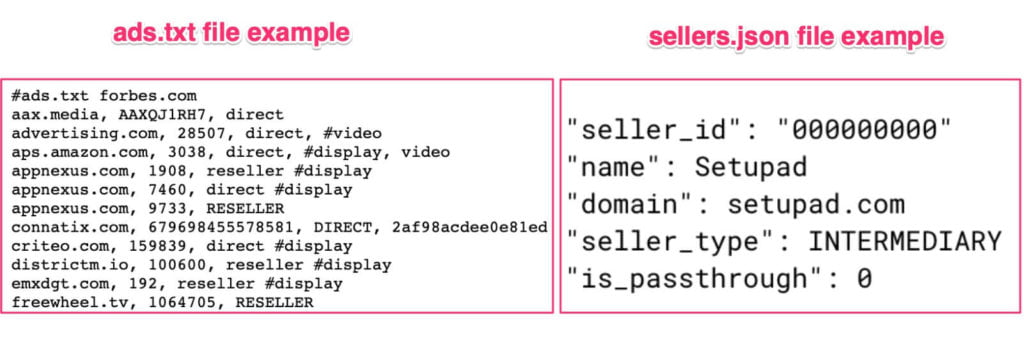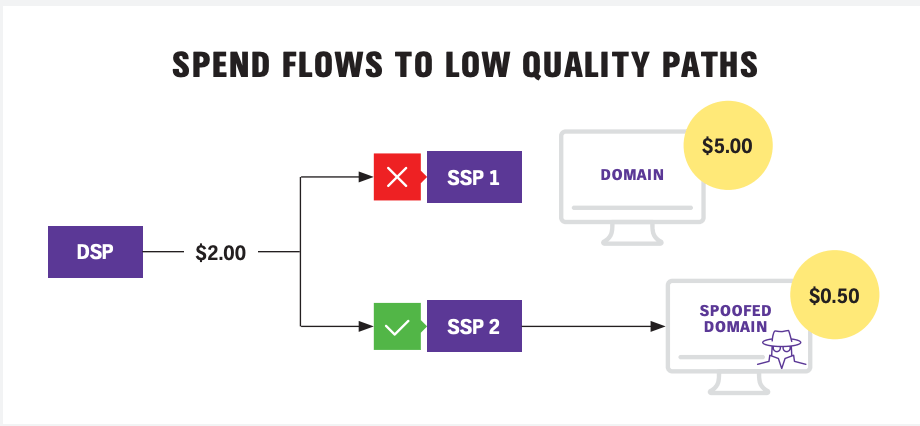¿Qué es la Supply Path Optimization (SPO) en programática?
La optimización de la ruta de suministro (SPO, del inglés Supply Path Optimization) es la práctica en adtech de racionalizar y seleccionar las rutas más eficientes para que los anunciantes compren inventario publicitario a los editores de forma programática.
En publicidad programática, no difiere mucho de la economía. Se trata de encontrar la ruta más corta y eficiente al eliminar a los intermediarios.
La SPO tiene dos vertientes. Por un lado, permite a los anunciantes encontrar las conexiones más eficaces y comprar impresiones publicitarias a los precios más razonables. Por otro lado, ayuda a los editores a aumentar sus ingresos publicitarios a largo plazo.
Averigüemos cómo.
¿Qué es la optimización de la ruta de suministro (SPO)?
Las plataformas de demanda (DSP) suelen encargarse de la SPO para ayudar a los compradores a encontrar la ruta de oferta más corta y eficiente en una subasta programática. En la práctica, se trata de eliminar el número de intermediarios (SSP e intercambios publicitarios) con los que trabajan los compradores.
En palabras del presidente de Prebid, Mike Racic: «La optimización de la ruta de suministro es entender quién toca tu inventario y [removing] tantos toques como puedas».
El SPO beneficia tanto a vendedores como a compradores porque ayuda a construir una cadena de suministro más transparente, a optimizar la experiencia del usuario y a aumentar la confianza entre todas las partes de la subasta programática.
Historia de la SPO
El header bidding se convirtió en algo habitual en la industria en 2014. Esta técnica de monetización permite a los editores recoger ofertas de muchos socios de demanda, como Google AdX, Xandr y Criteo, en pujas en tiempo real (RTB). En última instancia, esto maximiza el rendimiento del inventario publicitario y permite venderlo al precio más alto.
Sin embargo, como los editores trabajan ahora con varios exchanges simultáneamente, esto crea una capa adicional de complejidad en la cadena de suministro.
¿Por qué? Porque cada SSP / Ad Exchange trabaja con varias DSPs. Esto significa que en lugar de 10 postores puede haber más de 100. Por ello, una DSP puede recibir docenas de ofertas por exactamente la misma impresión publicitaria.

Fuente: Pubmatic
Además, cada SSP aplica su propia lógica de subasta, lo que añade aún más complejidad al proceso de puja. Por ejemplo, algunos pueden trabajar en una subasta de segundo precio o en una subasta parcial de primer precio.
Sin embargo, desde la perspectiva del comprador, no garantiza que cada SSP aporte una oferta exclusiva, ya que las SSPs pueden reenviar las mismas solicitudes de anuncios a las DSPs, lo que crea subastas duplicadas.
En este caso, los anunciantes pueden estar compitiendo contra sí mismos sin saberlo. Por tanto, los compradores deben determinar qué intermediarios añaden realmente valor. Y así es como surgió la optimización de la ruta de suministro en 2017.
¿Cómo funciona la SPO?
La SPO es un algoritmo que trabaja para reducir la duplicación de subastas y la discrepancia de anuncios, y ayuda al comprador a encontrar la ruta más eficiente y directa hacia una impresión publicitaria determinada.
El modelo tiene en cuenta varios factores para optimizar la ruta de suministro, por ejemplo, el tipo de inventario (web, móvil o aplicación), la visibilidad del anuncio, el rendimiento histórico y la geografía.
Aunque tradicionalmente «SPO» era un término acuñado por los compradores de medios para encontrar las vías de suministro más eficientes, más escalables y más transparentes, los editores también pueden utilizarlo. A menudo se utiliza como sinónimo de optimización de ruta de demanda, más conocida como DPO (del inglés Demand Path Optimization).
SPO frente a DPO
Tanto la optimización de la ruta de suministro (SPO) como la optimización de la ruta de demanda (DPO) se refieren a técnicas utilizadas para mejorar la eficiencia, la transparencia y la eficacia en el ecosistema de la publicidad programática. Pero la diferencia está en lo siguiente:
La SPO gira principalmente en torno a la optimización del lado de la oferta del ecosistema de la publicidad programática, es decir, los editores, los intercambios de anuncios y otras plataformas que ponen el inventario publicitario a disposición de los anunciantes.
La DPO, por su parte, se centra en optimizar el lado de la demanda del ecosistema de la publicidad programática, que incluye a los anunciantes y el inventario publicitario que demandan para llegar a un público objetivo.
¿Por qué los editores deben preocuparse por la SPO?
Según una investigación de IAB, el 87 % de las marcas, agencias y DSPs aplican la SPO de forma activa.
Otro estudio realizado por ISBA aportó las siguientes conclusiones:
- Sólo el 51% de los ingresos gastados suele acabar en un editor.
- Un 15% del gasto publicitario se pierde de manera desconocida en el ecosistema, y las campañas suelen aparecer en más de 40.000 sitios.
Algunas DSP ya están equipadas con algoritmos que las SSP analizan en tiempo real para elegir el inventario publicitario más relevante y ajustar en consecuencia las ofertas. Estos algoritmos también pueden eliminar las ofertas duplicadas.
Los líderes del sector predicen que las funciones de SPO serán aún mejores en el futuro. A medida que los actores de la tecnología publicitaria adopten activamente la SPO, los anunciantes recurrirán a más editores que ofrezcan vías transparentes y optimizadas. Esto puede ser beneficioso para los editores a largo plazo para atraer nueva demanda.
Además, es posible que los anunciantes dejen de pujar por el inventario para el que reciben varias solicitudes de anuncios, lo que supondrá una pérdida para los editores.
¿Por qué más SSPs no equivalen a mayores ingresos?
Los editores suelen pensar que un mayor número de SSPs equivale a un mayor rendimiento y, en última instancia, a mayores ingresos. Sin embargo, en la práctica es más complejo.
Trabajar con un número innecesariamente elevado de SSPs puede aumentar la latencia de la página y empeorar la experiencia del usuario. Además, una ruta de suministro complicada implica más tasas y cargos ocultos imposibles de atribuir.
Por tanto, el truco no está en trabajar con el mayor número posible de SSPs, sino en encontrar un punto óptimo en el que cada socio añada una demanda única al editor, que le ayude a conseguir el mayor rendimiento posible sin perjudicar la experiencia del usuario.

Además, muchos editores tienden a trabajar con menos socios para que las relaciones con ellos sean más completas y profundas.
Cuando los editores y los medios de comunicación evalúan las SSP, las tarifas suelen ser el factor más importante. Y aquí es donde entran en juego las asociaciones. Algunas SSP pueden reducir sus tarifas a cambio de una relación «preferente» con un comprador. Los compradores también pueden optar por trabajar con SSP en función de sus capacidades únicas, por ejemplo, su fortaleza en determinados tipos de inventario de medios (CTV, OTT o aplicaciones móviles) o su tecnología propia (capacidades de cotejo de datos de origen, gráficos de identificación de audiencias propios, etc.).
Antes, el proceso de obtener una cuenta SSP propia era complicado para los editores más pequeños, pero hoy en día muchos de los principales SSP aceptan a editores individuales de calidad. Desde Setupad también animamos a los editores a hacerlo, pues de este modo se garantiza una forma más transparente y eficaz de negociar el inventario con el menor número posible de intermediarios, y ayudamos a nuestros clientes a presentarnos a nuestros socios.
¿Cómo abordan las plataformas de autoservicio la demanda de SPO?
En el ámbito de la optimización de la ruta de suministro (SPO), los editores pueden aprovechar las ventajas de las plataformas avanzadas de autoservicio, como Setupad, para agilizar y mejorar sus estrategias de publicidad programática. Este sólido enfoque dota a los editores de toda una serie de funcionalidades:
- Integración perfecta de las cuentas SSP: con plataformas como Setupad Prebid Self-Serve los editores pueden conectar sin esfuerzo sus propias cuentas directas de SSP, lo que facilita una gestión unificada y centralizada de la cadena de suministro. Además, con esta plataforma, la adición de una SSP se realiza en 3 sencillos pasos, al copiar y pegar los IDs de los bloques de anuncios o al editarlos en bloque.
- Eliminación eficaz de cuentas SSP ineficaces: los editores adquieren la capacidad de identificar y desconectar las cuentas SSP que no son eficaces, sobre todo aquellas que son propensas a la duplicación o que operan como revendedores.
- Conexión directa a las DSP: la integración va más allá de las SSP. Los editores pueden establecer conexiones directas con DSP como TradeDesk OpenPath y forjar así un vínculo más directo y ágil con los socios de demanda.
- Pagos directos: a través de estas plataformas, los editores pueden recibir pagos directos y evitar intermediarios, lo que garantiza un flujo de ingresos más directo y puntual.
- Mayor control sobre el wrapper (Prebid): el uso de plataformas de autoservicio permite a los editores ejercer un mayor control sobre el wrapper, alimentado (en la mayoría de los casos) por la tecnología de Prebid. Este mayor control se traduce en una mayor flexibilidad y transparencia de los ingresos brutos.
- Modelo de tarifa plana por CPM: una ventaja relevante es la posibilidad de eliminar las cuotas de ingresos y pasar de los modelos tradicionales a una estructura de tarifa plana por CPM. Este cambio ofrece a los editores unos ingresos más previsibles.
- Orientación y asistencia directas al desarrollo: los editores que participan en plataformas de autoservicio no sólo ganan control, sino que también tienen la oportunidad de influir directamente en el desarrollo del sistema. Este enfoque colaborativo garantiza que la plataforma se adapte a las necesidades cambiantes de los editores. Además, los editores se benefician de la asistencia directa y receptiva del proveedor tecnológico.
En otras palabras, la integración de plataformas de autoservicio en el panorama de la SPO permite a los editores optimizar sus vías de suministro de forma integral. Desde la eliminación de las SSP ineficaces hasta el establecimiento de conexiones directas con las DSP, las funcionalidades que ofrecen estas plataformas son infinitas y ponen en manos de los editores un mayor control y transparencia.

Ventajas de la SPO
La optimización de la ruta de suministro tiene 5 ventajas principales para el editor y el sector en general:
- Transparencia: como hay tantos elementos que se mueven en una subasta programática, la falta de transparencia suele ser el principal problema. Como resultado, según el estudio de ISBA, alrededor de un tercio de los costes de la cadena de suministro no puede atribuirse al destinatario. Este dinero podría haber ido a parar a tasas e impuestos ocultos, o incluso a fraudes publicitarios.
- Mejor rendimiento: como hemos comentado, evaluar a cada socio y eliminar a los intermediarios puede ser beneficioso para mejorar la experiencia del usuarioa largo plazo. Esto es aún más importante para el inventario de vídeo, dada la importancia de la experiencia del usuario y los tiempos de carga en este entorno.
- Tasa de relleno: con los algoritmos de SPO, los anunciantes pujan por el inventario publicitario que les resulta interesante. Esto puede mejorar la tasa de relleno del editor.
- Fraude publicitario: las cadenas de suministro cortas y más directas aumentan la confianza entre quienes participan y reducen el riesgo de fraude publicitario y las pérdidas de ingresos publicitarios asociadas.
- Informes: la SPO ofrece a los editores una valiosa solución para agilizar la complejidad de los informes, sobre todo cuando los equipos de AdOps son pequeños. Cuanto más compleja es la cadena de suministro, más tiempo lleva examinar docenas de informes diarios.
Retos de la SPO
La DPO puede ser un proceso engorroso. Cuantas más SSP participen, más difícil será identificar los problemas abordables. Hay 2 retos principales asociados a la SPO:
- Complejidad de los datos: la naturaleza del sector programático ha introducido abundantes datos sobre demanda. Entre las empresas de verificación, los SSP y otros proveedores de tecnología publicitaria, los equipos internos de operaciones publicitarias disponen de mucha información y es difícil de cribar.
- Transparencia de datos y costes: la escasa transparencia de los datos introduce un nuevo nivel de complejidad, pues requiere el acceso a nuevas formas de datos, a menudo a nivel de registro, y la dificultad de obtener estos datos de ecosistemas cerrados.
¿Cómo se facilita la SPO?
Si bien la SPO puede facilitarse a nivel individual, hay una serie de iniciativas en toda la industria para optimizar la ruta de suministro. A continuación tienes 4 de estas iniciativas:
- Ads.txt: ads.txt es una iniciativa clave que contribuye a facilitar una cadena de suministro transparente. Al verificar el ads.txt, el comprador puede asegurarse de que el inventario de anuncios que ha adquirido es legítimo. En Setupad actualizamos regularmente nuestro archivo ads.txt y todos nuestros editores están obligados a añadirlo a sus sitios web.
- Sellers.json y SupplyChain Object: sellers.json es un archivo que contiene todos los vendedores y revendedores autorizados del inventario publicitario del editor, por ejemplo, las SSP o una plataforma de monetización. Es útil para los anunciantes porque pueden identificar al revendedor final en una solicitud de oferta. También ofrece información de toda la cadena de suministro. Supply Chain Object funciona en tándem con ads.txt y sellers.json, y permite rastrear al comprador final en la cadena de suministro.

- Menos SSP: uno de los pasos más importantes en la SPO es eliminar las SSP que no aportan valor real en términos de inventario o funcionalidad técnica. Esto se consigue al estudiar cuáles son los socios que aportan mayores beneficios. Por ejemplo, como parte de su esfuerzo de SPO, Criteo ha eliminado más de 10 SSP sin que el rendimiento de la campaña se haya visto afectado. Como resultado, la empresa tiene ahora un 99,7 % de visibilidad de su cadena de suministro.
- Normas sectoriales: dado que la seguridad y la relevancia de las marcas son las principales prioridades de los anunciantes, los compradores se decantan por SSP fiables y de calidad para garantizar que sus anuncios acaben en dominios prémium. Por eso es importante que todos los socios de la cadena de suministro cumplan las normas del sector. Por ejemplo, bloquear el tráfico no transparente (solicitudes de anuncios que no revelan la identidad del dominio) y aplicar medidas para evitar la suplantación de dominios.

Fuente: Pubmatic
Conclusión
Aunque al principio la SPO pueda parecer una amenaza para los compradores, es algo que beneficia enormemente al editor. Al disminuir el número de intermediarios, el anunciante obtendrá mejores resultados del editor y llevará su inversión publicitaria a ese editor. Además, los editores recibirán los ingresos publicitarios que podrían haberse perdido en fraude publicitario o haber ido a parar a comisiones ocultas para socios (lo que se conoce como «impuesto adtech»).
Comprender el flujo de dinero de la publicidad aumenta la transparencia y ayuda a rastrear las razones de la ubicación de anuncios, algo indispensable cuando abundan los sitios fraudulentos.
Mientras que uno de los enfoques de la SPO consiste en recortar los sitios de bajo rendimiento y los SSP con inventario revendido y comisiones elevadas, un método alternativo consiste en empezar por identificar cuáles son los que tienen un rendimiento alto. Este enfoque implica una evaluación individualizada de cada vendedor para localizar entidades de confianza dentro del vasto panorama de Internet, lo que simplifica el proceso de selección de socios fiables.


